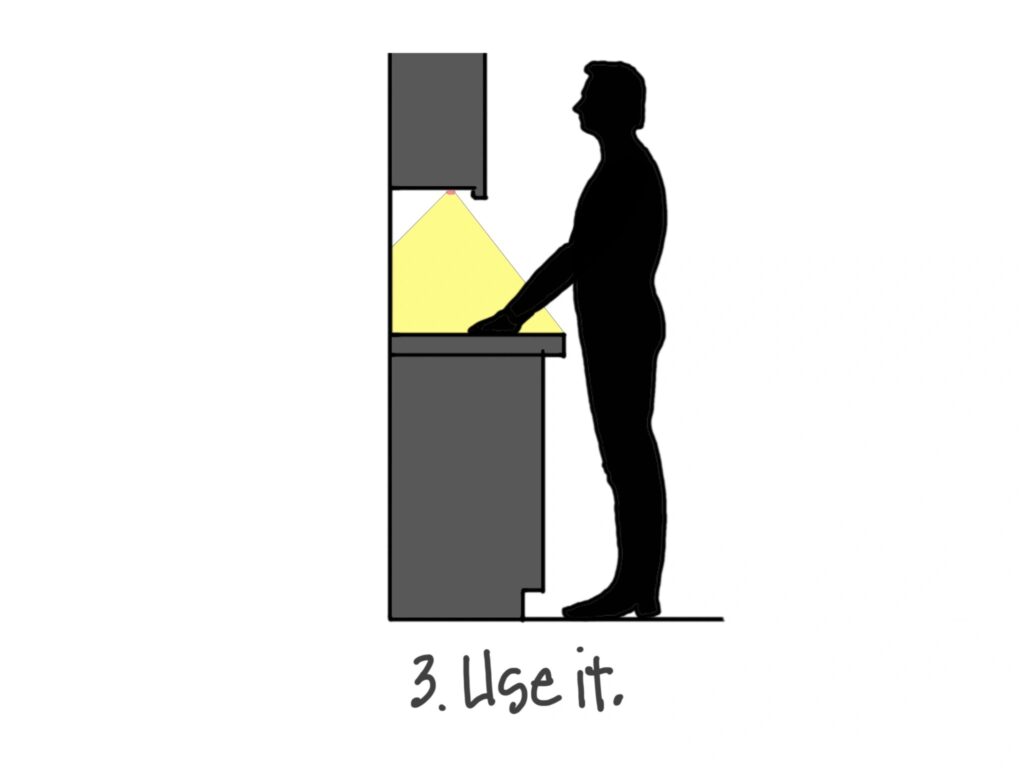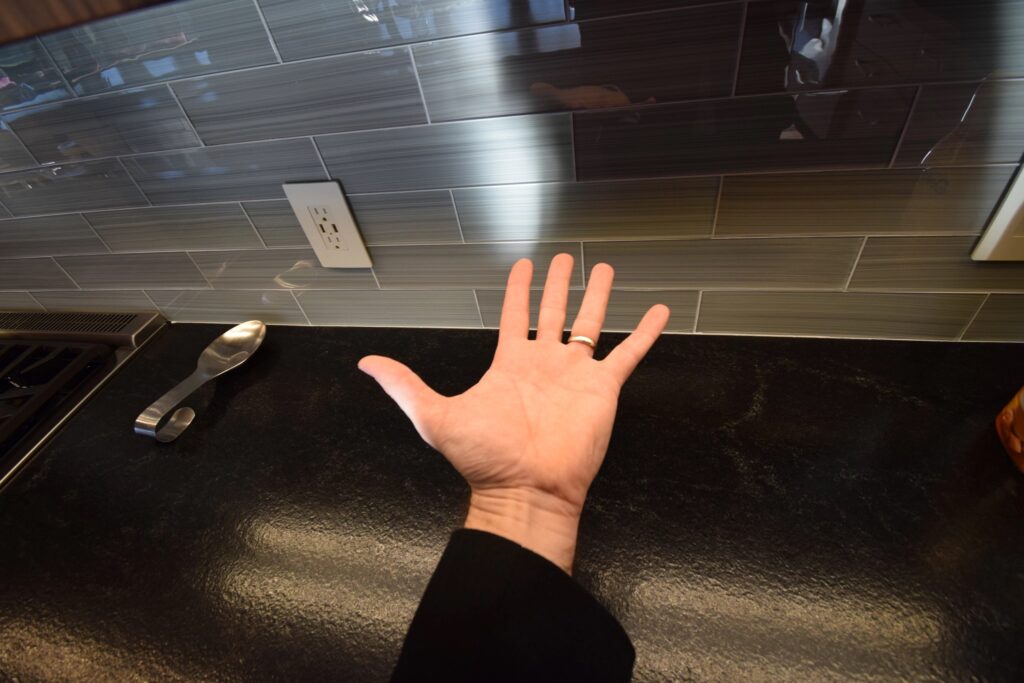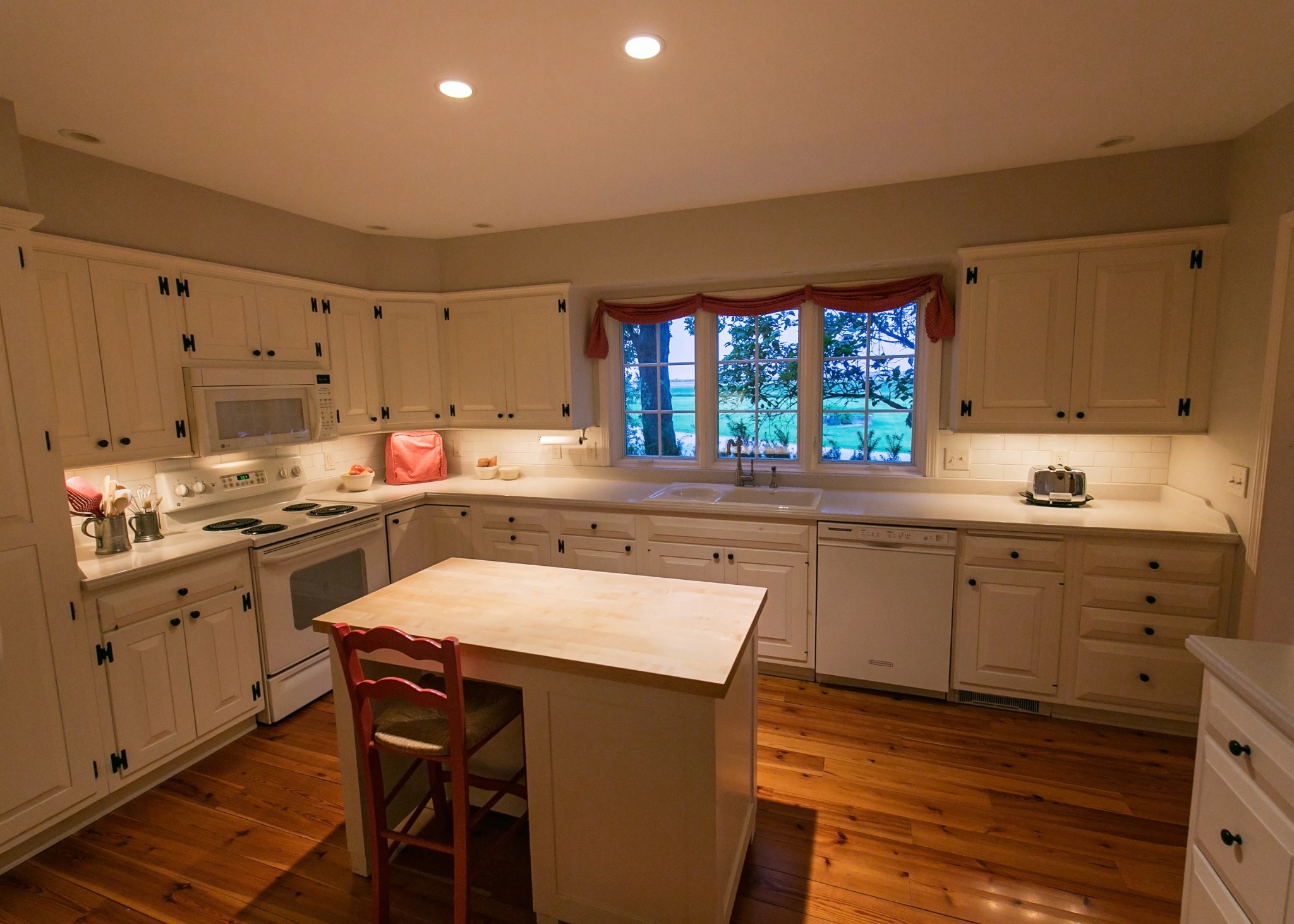I am a dreamer. I dream solutions, I dream new ways to share the gift of light, I dream new ways to use light. I also dream about running the Boston Marathon. Some dreams are more realistic than others.
On the flip side of the dreamer is the doer. I like getting checkmarks on my to-do list. I like seeing projects done. I like practical, actionable solutions as much as big crazy ideas.
What does this have to do with kitchens? A few weeks ago I wrote about doing just one thing to make a new build kitchen better. For some of us, building a new kitchen from scratch is, well, a dream. For many of us, the kitchen we have is the kitchen we will have. Hiring electrical contractors, drywallers, painters, and carpenters to come in and retrofit the lighting in our kitchen may not always be a reasonable solution. For some of us, we could not upgrade the lighting in our kitchens without a very unhappy landlord.
In other words, if 1THING: New Build Kitchens is a dream for many, is there 1THING we can do that does not require a big investment or a big mess? Is there 1THING we can do that just plugs in, like a lamp?
You bet there is. Kitchens may be the toughest to upgrade with plug-in solutions, but they often the hub of modern living and most need better light. So here it is: one thing to do in your existing kitchen.
Put light under the cabinets to illuminate the counters.

Step One: Get the right stuff.
I am a little obsessed with linear LED strip lights, also called tape light or linear light. LED strips are an amazing tool for all kinds of wonderful effects and far and away the best (currently available) solution for under-cabinet countertop lighting. Good quality strips can push light to the counters so that you can prepare breakfast or a late night snack with no other light on in the kitchen, making the space more relaxing and comfortable. During high-use times like dinner prep, the same strips will add light where it is needed most and make it easier to see what you are doing.
LED strips have a series of tiny LED diodes that produce light more efficiently than previous sources. The combined effect is almost miraculous: shadows from your hands can all but disappear. Each tiny diode creates a shadow, but the remaining diodes cancel out the shadows for a strong but diffuse quality of light. I have dreams of making the entire underside of cabinets into luminous surfaces, but for now LED strips are the best way to go.
Getting the right strips should not be hard. Kits are ubiquitous online and in big box retailers. On our specification side we use products from American Lighting, WAC, DiodeLED, and other high quality solutions that are a bit difficult to source on your own. Check out suppliers like SolidApollo for strips, kits, and all the parts needed set up for easy-to-use online shopping. Check the image above for suggested metrics to get good quality strips. Make sure to include power supplies and a convenient method of turning the strips on and off.

Step Two: Put it in the right place.
This question seems simple but there is a surprisingly robust debate about where to place strips. There are a number of considerations such as the color and type of backsplash, the construction of the upper cabinets, and the type and sheen of the countertop. If you are trying to light the counters – and everything you do there – then the best place is typically right above the counter, pointing down. We recommend placing strips about 3″ behind the face of the cabinet to reduce the risk of hard shadowing and to put enough light towards the back of the counter where the toaster lives.
You’ll also need to hide the power supplies and make sure there is a receptacle nearby for plugging in. Power supplies are often small enough to tuck into the space underneath the upper cabinet, just be sure to place them towards the back so they do not cause shadows from the strips. If you have a small drill bit and own the cabinets, a cleaner look is to place the power supply inside a cabinet and run wires from there.

Step Three: Use it.
Duh. Just make sure to use the light once you have it. Once you get used to LED strips on your kitchen counters, you won’t want to give it up. The result should be good strong even illumination like in the photo below. Chances are high that you may end up using these lights more than any other in your kitchen. Why? Because it is the right light in the right place. That’s lighting design.

And one more thing…
Maybe you already have under cabinet light or you want to go a little further. What is the next step for lighting a kitchen if you can only plug in and not re-wire? Try adding LED strips in other locations such as:
- On top of upper cabinets for a soft glow on the ceiling
- Underneath the toe kick of the base cabinets for a comfortable night light
- Underneath the peninsula or island top to chase shadows away from the bar stool area
- Inside deep pantries to make finding that last box of mac’n’cheese easier
- Inside glass fronted cabinets to make the contents sparkle
Read more about under cabinet lighting, or watch this short video.
